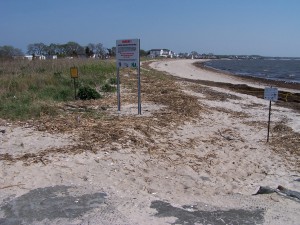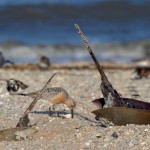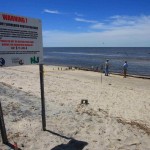Great Shorebird Viewing Opportunities…
…found at Delaware Bay beaches in May.
by Larissa Smith, biologist/volunteer manager

Several Delaware Bay beaches will be closed from Monday, May 7 to Thursday, June 7, 2012. Beaches are closed to protect a rapidly-declining population of migrating shorebirds including the red knot which is an endangered species in NJ. But this doesn’t mean that you can’t come out and view the shorebirds and horseshoe crabs. It’s the prefect time to see these birds undisturbed and feeding on horseshoe crab eggs.
Several beaches are set-up for shorebird viewing including Reeds Beach, Norburys Landing, Kimbles Beach and Cooks Beach in Cape May County. Find more viewing locations on our interactive Wildlife Viewing Map.
Shorebird Stewards will be present at closed beaches to educate the public about the interaction between the shorebirds and horseshoe crabs. Take some time this May and come visit the Delaware Bay and enjoy the view!
Detailed maps of the closed areas can be found at:
http://www.state.nj.us/dep/fgw/ensp/beachclozmap.htm

